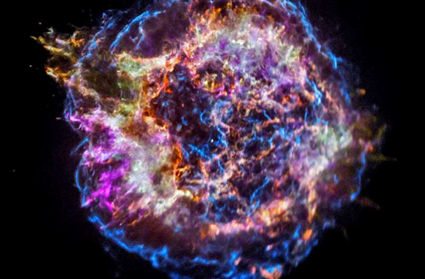Researchers at Michigan State University (MSU) have checked the results of their research and conclude it is correct. The team’s finding challenges how some of the Earth’s heavy elements are made—specifically ruthenium and molybdenum.
What they found is that the innermost area of supernovae can forge carbon atoms over 10x faster than previously known through a reaction called the triple-alpha process. The results of the research were published online on December 2, 2020.
The process begins with alpha particles, the cores of helium atoms, or nuclei. Each alpha particle is made up of two protons and two neutrons. In the triple-alpha process, stars fuse together three alpha particles, creating a new particle with six protons and six neutrons. This is the most common form of carbon.
According to the research, fusing three alpha particles together is an inefficient process, unless something is helping it along. The Spartan team found that the innermost regions of supernovae have such helpers floating around: excess protons. So, a supernova rich in protons speeds up the triple-alpha reaction.
The result of this, however, is that the triple-alpha reaction puts the brakes on the supernova’s ability to make heavier elements on the periodic table. It has long been believed that proton-rich supernovae created Earth’s surprising abundance of certain ruthenium and molybdenum isotopes, which contain closer to 100 protons and neutrons. According to the findings, they aren’t likely made in a proton-rich supernova.
So, where are abundant ruthenium and molybdenum isotopes and other heavy metals made? So far, it’s anyone’s guess.

